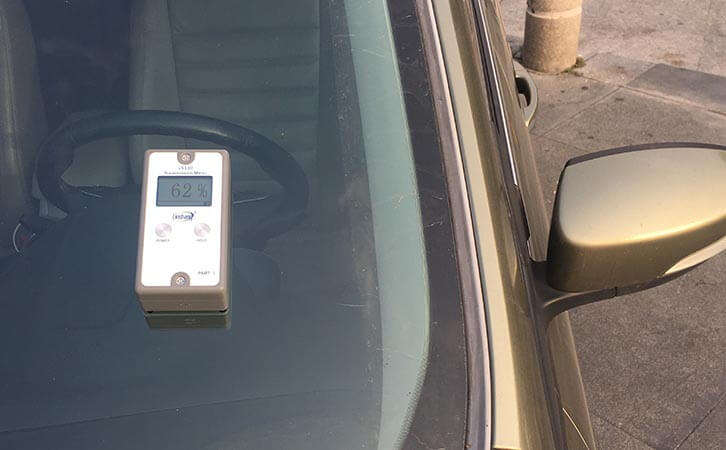What is the Difference between Automotive Glass Film and Architectural Glass Film?
We believe many people have heard of car film, most car owners will put a protective film on their car window glass, but we have heard relatively little about building film. With the improvement of people ’s living standards, safety awareness, many people also choose to put a layer of film on the glass for safety protection, so many people want to ask what is the difference between the car film and the architectural film, can they be replaced with each other? Although both can block the amount of heat insulation and ultraviolet rays to give the glass protection, but the two kind of films are still different, so let's take a look together?
1. Color and transmittance.
First, the intuitive colors are different. The color of the car film is black, natural, green, etc., especially the front car film, the light transmittance must not be less than 70%. The light transmittance is an important consideration parameter of the car film. We can use the tint tester to measure the light transmittance of the car film.
In addition, when choosing automotive film, try to choose a film with light color and low reflectance. Compared with automotive glass film, architectural film has less strict requirements on light transmittance. The color of the architectural is also richer and more diverse, with high definition and low reflectance. The film can be selected without causing light pollution. At the same time, in addition to the thermal insulation effect, architectural glass film also has excellent performances such as blocking ultraviolet rays, filtering dazzling light, reflecting strong light (you can enjoy the beautiful scenery outside the window while protecting indoor privacy), enhancing the glass texture, safety, explosion-proof and bulletproof.
These properties can effectively improve the function of glass, improve the quality of people's living and office environment, reduce building energy consumption. The stick-film glass of these performances can effectively solve many practical problems and meet people's actual needs. Similarly, these parameters can also be tested by solar film-related detection instruments. We can use tint testers to choose comfortable and safe architectural glass films.
2. The reflectance.
Automotive glass film and architectural glass film both have certain requirements on the reflectance. The reflectivity of architectural glass film is generally higher than that of automobile film. The internal and external reflection of automotive film cannot be higher than 17%, especially for automobiles. Inside, if the reflectivity of the car is relatively high, the shadows of the objects on the dashboard will be reflected on the glass. This will seriously interfere the driver's driving vision, affect the driver's correct judgment. There is a certain relationship between the transmittance value and the reflectance of a material, so we can indirectly reflect the reflectance of the material by measuring the transmittance value of the material with a tint tester.
Therefore, automotive glass film is very different from architectural glass film. If we want to protect architectural glass, we can try to choose high-quality architectural glass film. Excellent quality architectural glass film can effectively block solar radiation enter through the glass to reduce the indoor heating of the building. Therefore, in summer, it can not only maintain the indoor temperature, improve environmental quality, increase comfort, but also effectively reduce the cost of temperature control.
When we choose car film, we try to choose some high-quality car films with good heat insulation and high light transmittance. The transmittance of all car front windshield film must be more than 70%! Whether it is architectural glass film or automotive glass film, we can use the tint testerto measure the true data of the glass film transmittance and use the gloss meter to measure the reflectance of automotive glass and the reflectance of architectural films. Use the tint tester and gloss tester to choose comfortable and safe architectural glass film and automotive glass film!
- Linshang Insulated Glass Unit Measuring Tools
- Spectacle lens anti-blue light detection---blue-violet light transmittance meter
- Measurement of Optical Density
- Difference of LS116 Transmission & LS117 OD Meter
- Difference between LS116 and LS117 Light Transmittance Meter
- What’s the Difference Between Point Light and Parallel Light Transmittance Meter
